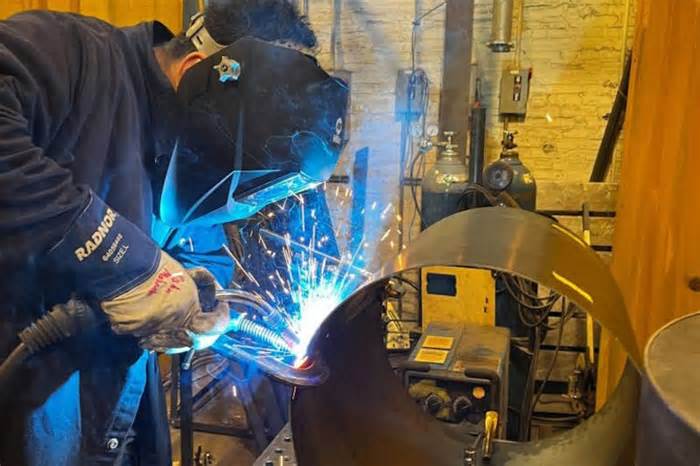
A new generation of telescopes will probe the ‘unknown unknowns’ that could transform our knowledge of the universe
- by The Conversation
- Oct 17, 2024
- 0 Comments
- 0 Likes Flag 0 Of 5

ESO, Esa/Hubble, M. Kornmesser, CC BY
The latest space telescopes are therefore millennials. They were designed at a time when astronomers had measured the universe’s newborn expansion following the Big Bang, and also its old-age, accelerating expansion. Their main goal now is to fill the gap –- because, surprisingly, interpolations from early times to late times don’t meet in the middle.
The measured rates for the expansion of the universe are inconsistent, as are results for the clumpiness of matter in the cosmos. Both measurements create challenges for our theories of how the universe evolved.
Observing the middle age of the universe requires telescopes operating at long wavelengths, because light from distant galaxies is stretched by the time it reaches us. So, Webb has infrared zoom cameras, while the European Space Agency’s Euclid space telescope, launched in 2023, and Nasa’s Nancy Grace Roman telescope, which is set to launch in 2026, both have infrared wide-angle views.
Three buses come along at once
Most stars shine in ultraviolet and infrared colours that are blocked by the Earth’s atmosphere, as well as the colours our eyes evolved to see.
Extra colours are useful. For example, we can weigh stars on the other side of our galaxy because massive stars are bright in infrared, while smaller ones are faint – and they stay that way throughout their lifetimes. However, we know where stars are being born because only young stars emit ultraviolet light.
In addition, independent measurements of the same thing are vital for rigorous science. Infrared telescopes, for example, can work together and have already made surprising discoveries. But it’s not great for diversity that the Webb, Euclid and Roman space telescopes all see infrared colours.
Hubble’s visible light camera has just been switched off due to budget cuts. Nasa will not swing back to ultraviolet wavelengths until the 2030s, with the Ultraviolet Explorer and Habitable Worlds Observatory.
Rendering of Esa’s Euclid telescope, launched in 2023, which is now 1 million miles from Earth.
Esa, CC BY-SA 3.0.
Earthly politics gets in the way, too. Data from China’s Hubble-class space telescope, Xuntian, is unlikely to be shared internationally. And in protest at Russia’s invasion of Ukraine, in February 2022 Germany switched off its eRosita X-ray instrument that had been operating perfectly, in collaboration with Russia, a million miles from Earth.
Cheap commercial launches may save the day. Euclid was to have lifted off on a Russian Soyuz rocket from a European Space Agency spaceport in French Guiana. When Russia ended operations there in tit-for-tat reprisals, Euclid’s launch was successfully switched at the last minute to a SpaceX Falcon 9 rocket.
If large telescopes can also be folded inside shoebox-size “cubesat” satellites, the lower cost would make it viable for them to fail. Tolerating risk creates a virtuous circle that makes missions even cheaper.
Telescopes are also being tried in innovative locations such as giant helium balloons and aeroplanes. One day, they might also be deployed on the Moon, where the environment is advantageous for certain types of astronomy.
The Rubin Observatory is located on the Cerro Pachón mountain in northern Chile.
Please first to comment
Related Post
Stay Connected
Tweets by elonmuskTo get the latest tweets please make sure you are logged in on X on this browser.
Sponsored
Popular Post
Tesla: Buy This Dip, Energy Growth And Margin Recovery Are Vastly Underappreciated
28 ViewsJul 29 ,2024






 Energy
Energy



















